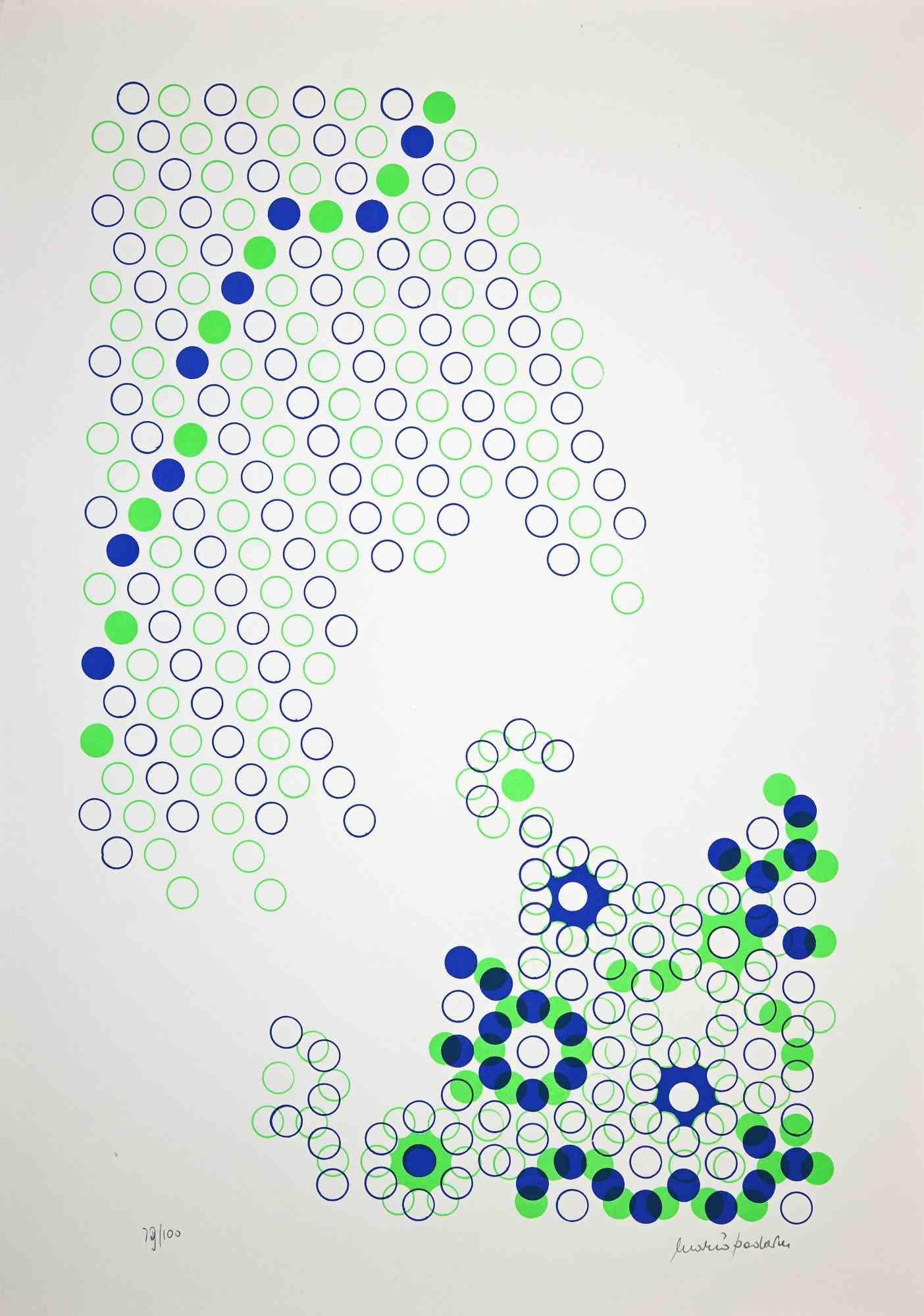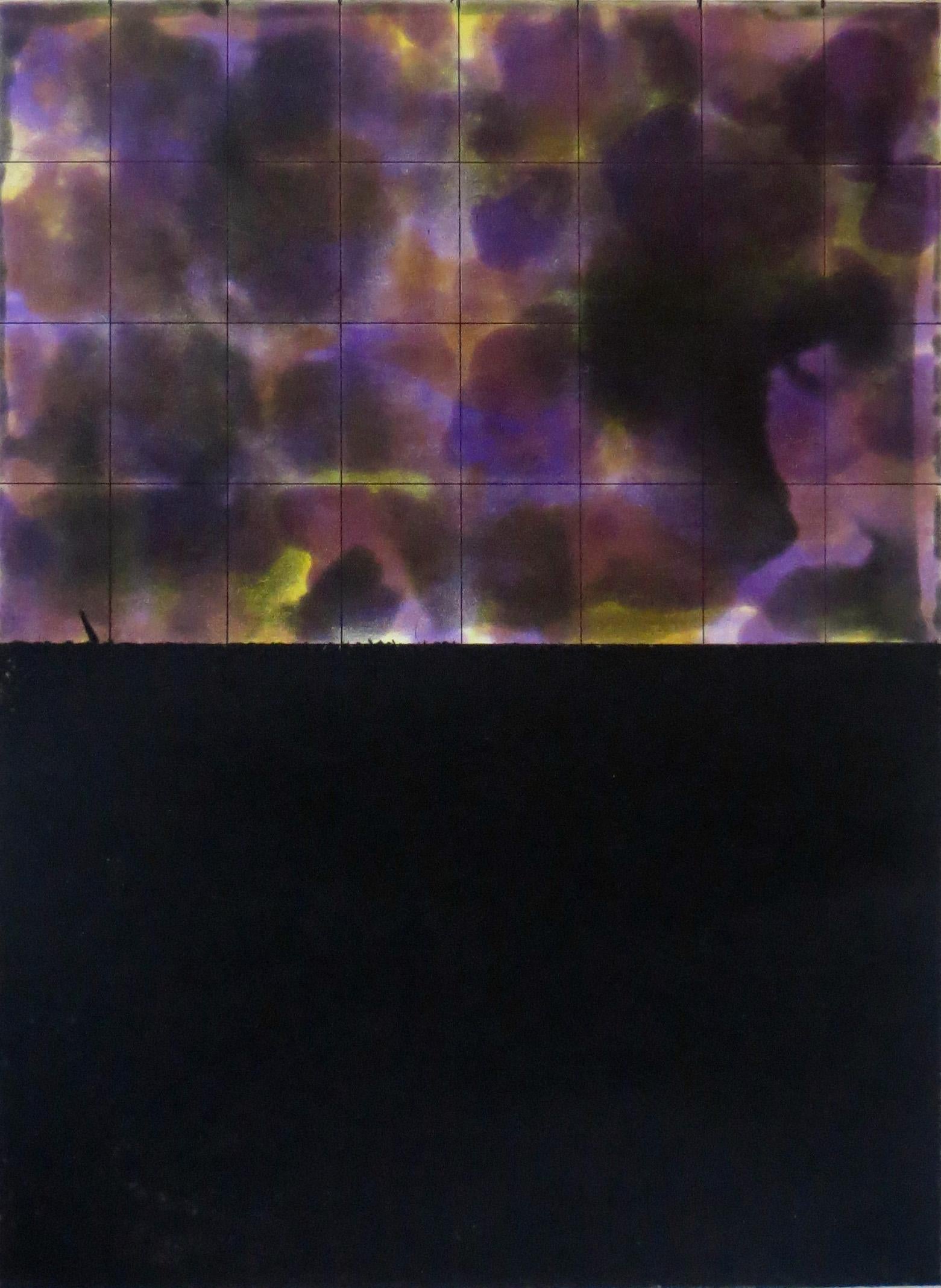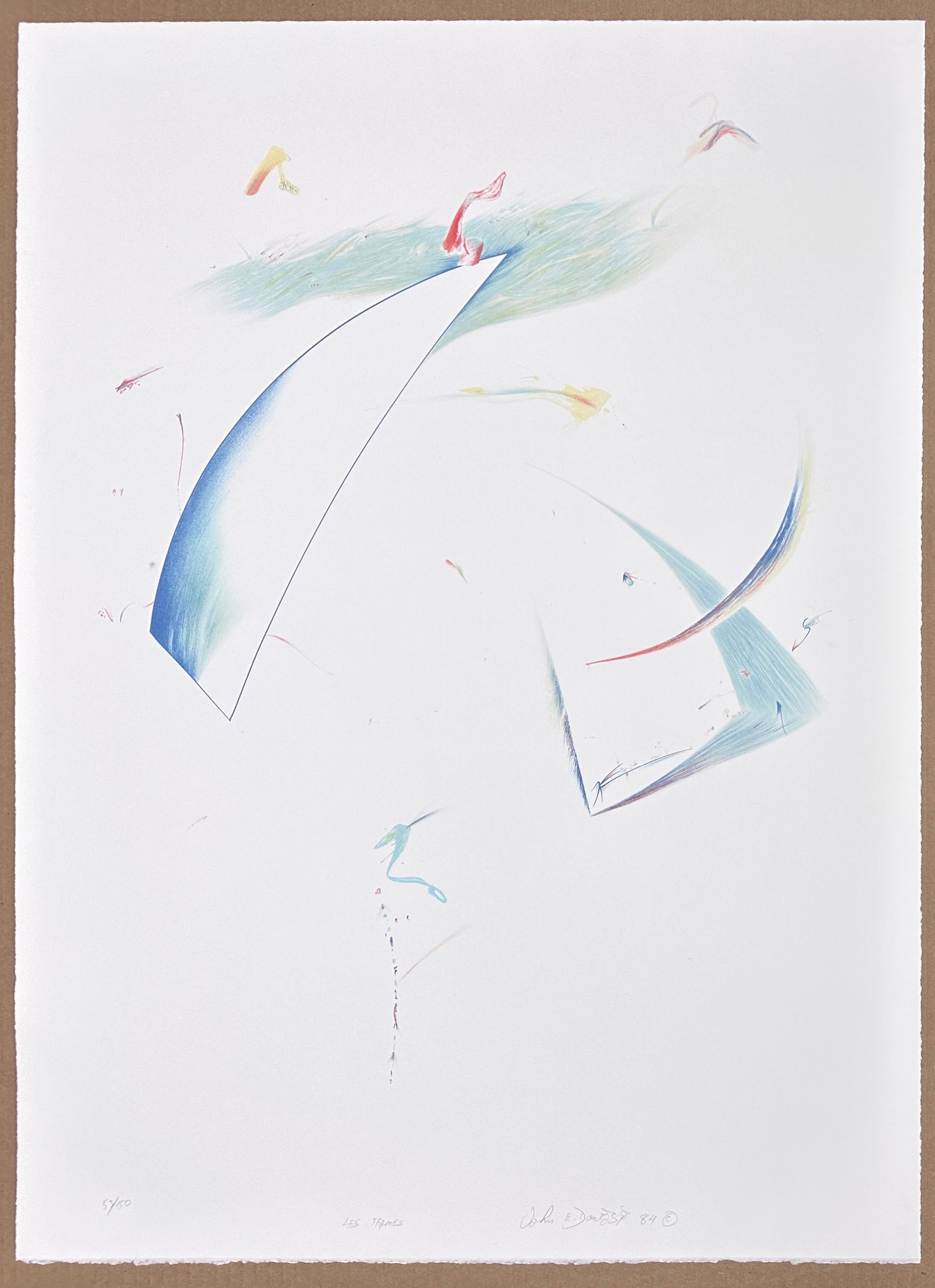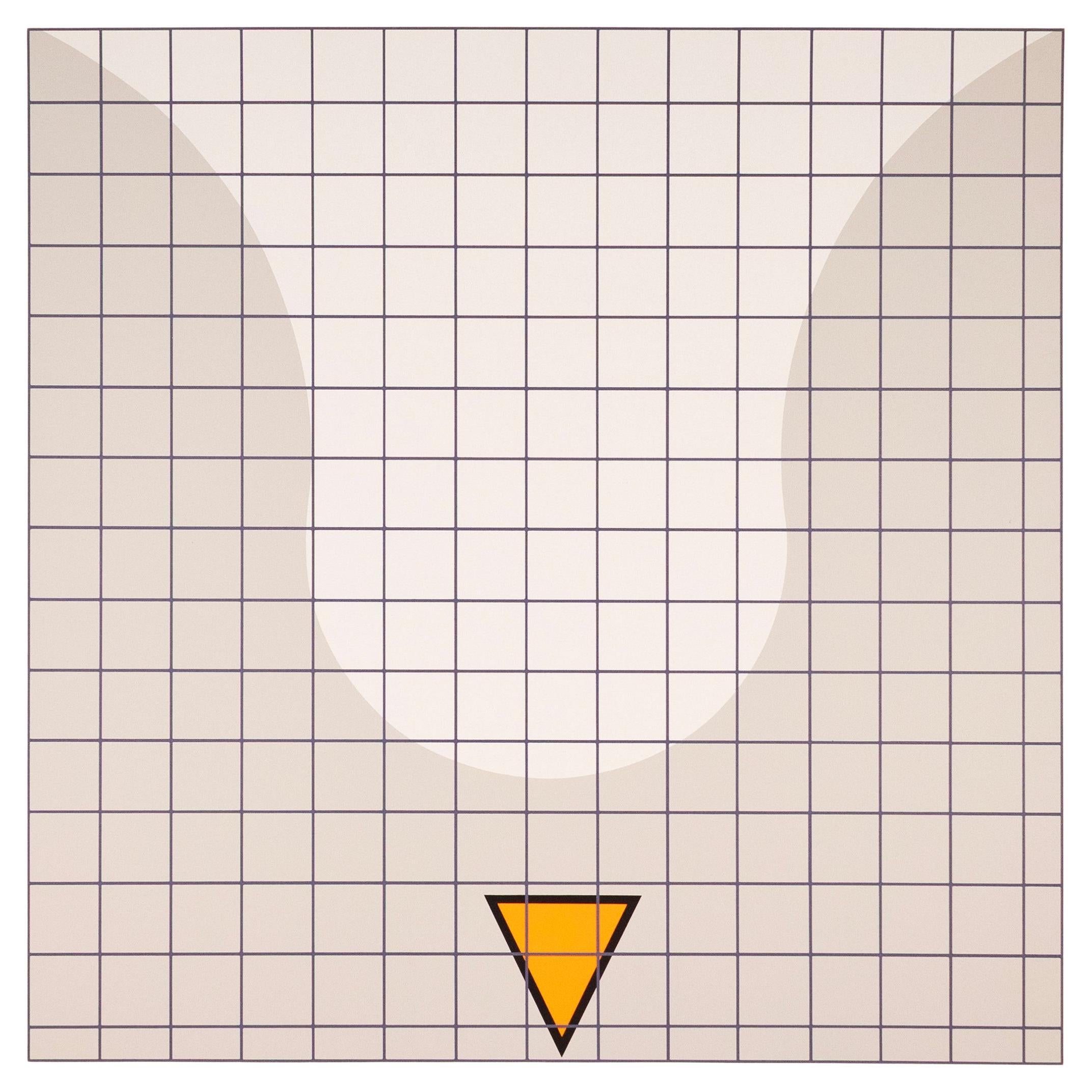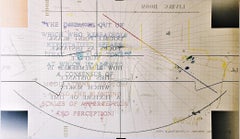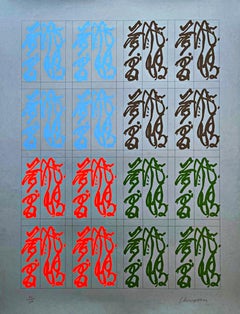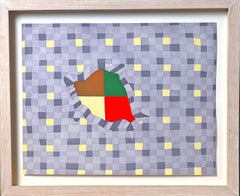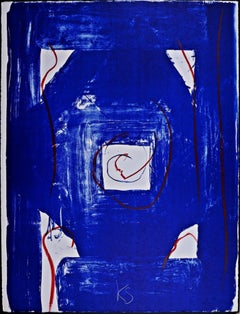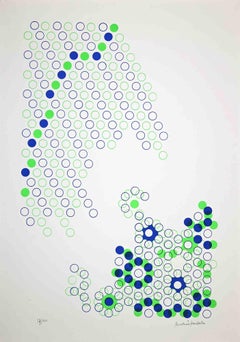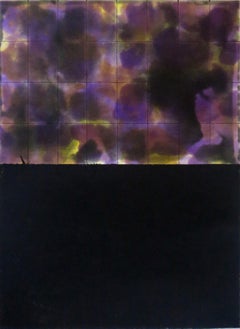Items Similar to Shusaku Arakawa, Japanese-American, A Man Walking, Abstract Silkscreen signed/N
Want more images or videos?
Request additional images or videos from the seller
1 of 6
Shusaku ArakawaShusaku Arakawa, Japanese-American, A Man Walking, Abstract Silkscreen signed/N1968
1968
$2,800
£2,156.79
€2,462.81
CA$3,994.83
A$4,371.65
CHF 2,292.73
MX$52,250.52
NOK 28,934.14
SEK 26,992.06
DKK 18,392.64
About the Item
Shusaku Arakawa
A Man Walking, 1968
Silkscreen on velincarton (thin board)
29 4/5 × 21 4/5 inches
Edition of 100
Hand signed and numbered from the edition of 100 on the front
Unframed
Rarely found on the marketplace, another example of this work is in the permanent collection of the Walker Art Center (donated by legendary art dealer Virginia Dwan)
Another rarely seen, richly colored mid century silkscreen by Arakawa, whose estate is represented by Gagosian Gallery. This work has only appeared a handful of times at public auction over the past half century.
Shusaku Arakawa (荒川 修作 Arakawa Shūsaku, July 6, 1936 – May 18, 2010) who spoke of himself as an “eternal outsider” and “abstractionist of the distant future,” first studied mathematics and medicine at the University of Tokyo, and art at the Musashino Art University. He was a member of Tokyo’s Neo-Dadaism Organizers, a precursor to The Neo-Dada movement. Arakawa’s early works were first displayed in the infamous Yomiuri Independent Exhibition, a watershed event for postwar Japanese avant-garde art. Arakawa arrived in New York in 1961 with fourteen dollars in his pocket and a telephone number for Marcel Duchamp, whom he phoned from the airport and over time formed a close friendship. He started using diagrams within his paintings as philosophical propositions. Jean-Francois Lyotard has said of Arakawa’s work that it “makes us think through the eyes,” and Hans-Georg Gadamer has described it as transforming “the usual constancies of orientation into a strange, enticing game—a game of continually thinking out.” Quoting Paul Celan, Gadamer also wrote of the work: "There are songs to sing beyond the human." Arthur Danto has found Arakawa to be “the most philosophical of contemporary artists." For his part, Arakawa has declared: “Painting is only an exercise, never more than that.” Arakawa and Madeline Gins are co-founders of the Reversible Destiny Foundation, an organization dedicated to the use of architecture to extend the human lifespan. They have co-authored books, including Reversible Destiny, which is the catalogue of their Guggenheim exhibition, Architectural Body (University of Alabama Press, 2002) and Making Dying Illegal (New York: Roof Books, 2006).
- Creator:Shusaku Arakawa (1936 - 2010, Japanese)
- Creation Year:1968
- Dimensions:Height: 29.8 in (75.7 cm)Width: 21.8 in (55.38 cm)
- Medium:
- Movement & Style:
- Period:
- Condition:Very good condition with no apparent issues.
- Gallery Location:New York, NY
- Reference Number:1stDibs: LU1745214963282
About the Seller
5.0
Platinum Seller
Premium sellers with a 4.7+ rating and 24-hour response times
Established in 2007
1stDibs seller since 2022
466 sales on 1stDibs
Typical response time: 2 hours
- ShippingRetrieving quote...Shipping from: New York, NY
- Return Policy
More From This Seller
View AllDouble Point Blank, rare 1970s lithograph, signed/N, renowned conceptual artist
By Shusaku Arakawa
Located in New York, NY
Shusaku Arakawa
Double Point Blank, 1979
Lithograph on paper with deckled edges
Hand signed, numbered 13/45 and titled with publisher's and printer's blind stamp on lower front and p...
Category
1970s Abstract Abstract Prints
Materials
Lithograph
Chinatown Portfolio II Plate Three Signed Silkscreen Large 40 x 38" Greek artist
By Chryssa Vardea-Mavromichali
Located in New York, NY
Chryssa
Chinatown Portfolio II, Plate Three, ca. 1978
Silkscreen on thick wove paper
40 × 30 1/2 inches
(Ships rolled in a tube measuring 35 x 5 x 5)
Pencil signed and numbered 36/150 on the front; bears printers stamp on the back
Unframed
from the Chinatown Portfolio
Printed by Atelier Arco in Paris (with stamp on the back of the print)
from the Chinatown Portfolio
Renowned Greek-American artist Chryssa was preoccupied with the concept of Chinese letters as art forms, which she explores in her Chinatown silkscreen series. Her deliberate experimentations yield an elegant and compelling result.
Chryssa Biography
Chryssa Vardea...
Category
1970s Abstract Abstract Prints
Materials
Screen, Pencil, Graphite
Untitled #3, Color Abstract Expressionist Etching and Aquatint Signed/N Framed
By Thomas Nozkowski
Located in New York, NY
Thomas Nozkowski
Untitled #5, 2008
Color etching with aquatint on Hahnemühle paper
Signed, dated and numbered 5/35 in graphite pencil on the back. Bears original Deutsche Bank collec...
Category
Early 2000s Abstract Abstract Prints
Materials
Etching, Aquatint
Kimber Smith, Abstract Expressionist Geometric Abstraction signed/n lithograph
By Kimber Smith
Located in New York, NY
KIMBER SMITH
Untitled Abstract Expressionist Geometric Abstraction, 1967
Lithograph on Rives paper
25 × 19 3/5 inches
Signed in silver...
Category
1960s Abstract Geometric Abstract Prints
Materials
Lithograph
Historic Dwan Gallery Poster: Presence or the Third Person
By Shusaku Arakawa
Located in New York, NY
Shusaku Arakawa
Historic Dwan Gallery Poster: Presence or the Third Person, 1967
Offset lithograph poster
30 x 22 inches
Unframed
Rarely found, coveted 19...
Category
1960s Contemporary Abstract Prints
Materials
Lithograph, Offset
Near and Far Acuity, Signed Mid Century Modern Op Art painting, historic exhibit
By Richard Anuszkiewicz
Located in New York, NY
Richard Anuszkiewicz
Near and Far Acuity, 1957
Gouache and watercolor painting on board
Hand signed and dated 1957 by Richard Anuszkiewicz on the right front
Frame included
Anuszkie...
Category
Mid-20th Century Op Art Abstract Drawings and Watercolors
Materials
Mixed Media, Watercolor, Gouache
You May Also Like
Fluo Composition - Original Lithograph print by Mario Padovan - 1970s
By Mario Padovan
Located in Roma, IT
Fluo Composition is an original colored lithograph realized by Mario Padovan in the 1970s .
Hand-signed in pencil on the lower right. Numbered in pencil on the lower left. Edition ...
Category
1970s Abstract Abstract Prints
Materials
Lithograph
Minimalist Abstract Geometric Screenprint 1969 by Michael Argov
By Michael Argov
Located in Long Island City, NY
Artist: Michael Argov, Austrian/Israeli (1920 - 1982)
Title: untitled 1
Year: 1969
Medium: Screenprint, signed and numbered in pencil
Edition: 32
Size: 27.5 x 20 inches (69.85 x 50....
Category
1960s Abstract Geometric Abstract Prints
Materials
Screen
$600 Sale Price
20% Off
96-C-1
Located in San Francisco, CA
Artist: Yutaka Yoshinaga – Japanese (1948- )
Title: 96-C-1
Year: 1996
Medium: Color spit bite aquatint with drypoint and hard ground etching.
Image si...
Category
1990s Abstract Geometric Abstract Prints
Materials
Etching, Aquatint
Drifter Plus #1, Abstract Conceptual Lithograph by Glenn Goldberg
By Glenn Goldberg
Located in Long Island City, NY
Artist: Glenn Goldberg, American (1953 - )
Title: Drifter Plus #1
Year: 1989
Medium: Lithograph, signed and numbered in pencil
Edition: 11/35
Size: 26 x 19.5 in. (66.04 x 49.53 cm)
Category
1980s Conceptual Abstract Prints
Materials
Lithograph
Abstract minimalist lithograph by African-American artist: music, dance inspired
By John Dowell
Located in Bryn Mawr, PA
This is an abstract, minimalist composition with minute, highly detailed colorful markings inspired by music, dance, and space. It is a limited edition lithograph, signed, dated, titled "Les Termes," and numbered #53/150, lower margin. Pristine condition.
John Dowell...
Category
1980s Abstract Abstract Prints
Materials
Lithograph
Takesada Matsutani Curve Signed Abstract Minimalist Silkscreen Unframed Art
Located in Keego Harbor, MI
An abstract silkscreen in colors on paper titled “Curve” by Takesada Matsutani. Signed in pencil lower right. Titled and annotated 42/75 on the lower left. Published in 1971. This ar...
Category
Vintage 1970s Japanese Minimalist Prints
Materials
Paper
More Ways To Browse
Mid Century Silkscreen
Arthur Danto
Vintage Japanese Screen Print
Past Auctions
Joan Miro Revolutions Sceniques Du Xxe Siecle I
Jorg Schmeisser
Josef Albers Yellow
Kandinsky And Etching
Kaws Snoopy
Krakow Vintage Poster
Lennart Nystrom
Lichtenstein Silkscreen
Luciano Castelli
Milan Lukac
Motherwell Africa Suite
Mourlot Corbusier
Pablo Eduardo
Pepe Tanzi
